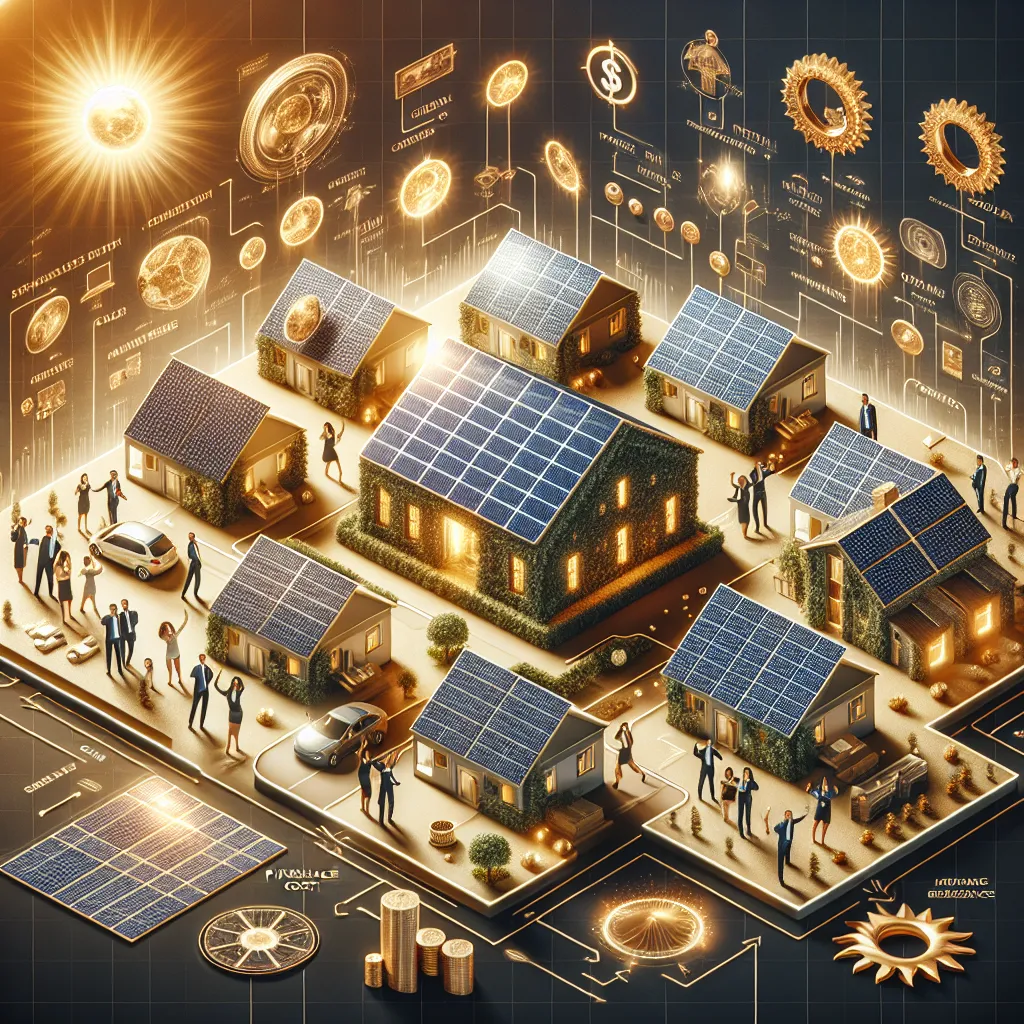Solar Panel Cost: Determining the Financial Investment for Sustainable Energy
Solar energy has gained significant momentum in recent years as a clean and renewable source of power. With the increasing concerns about climate change and the growing need for sustainable energy alternatives, solar panels have become a popular choice for homeowners and businesses alike.
One crucial factor to consider when opting for solar energy is the cost associated with installing and maintaining solar panels. In this article, we will delve into the various aspects of solar panel costs, including the initial investment, long-term savings, government incentives, and factors influencing the overall expense.

The Initial Investment:
The upfront cost of installing solar panels can vary depending on several factors, such as the size of the system, the type and quality of panels, and the complexity of the installation process. On average, residential solar panel systems can cost anywhere between $15,000 to $25,000.
However, it is important to note that the initial investment can be significantly offset by the long-term savings generated through reduced electricity bills. Solar panels harness the sun's energy to generate electricity, which can substantially reduce or even eliminate your reliance on the traditional power grid. As a result, homeowners can experience substantial savings on their monthly electricity bills.
Long-Term Savings:
While the initial investment may seem substantial, solar panels offer long-term financial benefits that make them an attractive option. The savings generated by solar energy can offset the initial cost over time, resulting in a return on investment (ROI).
The ROI can vary depending on several factors, including the cost of electricity in your area, the size of your solar panel system, and the amount of sunlight your location receives. On average, homeowners can recover their initial investment within 5 to 10 years.
Furthermore, solar panels have a long lifespan, usually ranging from 25 to 30 years. This means that after the initial investment is recouped, homeowners can enjoy free electricity for many years, resulting in significant savings over the system's lifetime.
Government Incentives:
To encourage the adoption of solar energy, many governments offer various incentives and rebates to homeowners and businesses. These incentives can significantly reduce the overall cost of installing solar panels, making them more financially feasible.
One common incentive is the federal Investment Tax Credit (ITC) in the United States, which allows homeowners to deduct a percentage of the solar panel system's cost from their federal taxes. Other countries may have similar programs in place to promote renewable energy adoption.
Additionally, some local governments and utility companies provide additional incentives, such as grants or feed-in tariffs, which further reduce the financial burden of installing solar panels. It is essential to research and understand the available incentives in your area to maximize your savings.
Factors Influencing Solar Panel Cost:
Several factors can influence the overall cost of installing solar panels:
- System Size: The size of the solar panel system directly affects the cost. Larger systems can generate more electricity but come with a higher upfront investment.
- Panel Type and Quality: Different types of solar panels, such as monocrystalline, polycrystalline, or thin-film, have varying efficiencies and costs. Higher-quality panels may be more expensive but can offer better performance and durability.
- Installation Complexity: The complexity of the installation process, such as the roof type, electrical wiring requirements, and any necessary upgrades, can impact the overall cost.
- Location: The amount of sunlight your location receives throughout the year affects the system's efficiency and, consequently, the cost. Areas with ample sunshine can generate more electricity and provide better ROI.
- Maintenance and Monitoring: While solar panels generally require minimal maintenance, it is important to consider the potential costs associated with cleaning, repairs, and monitoring systems to ensure optimal performance.
Conclusion:
Investing in solar panels is not only an environmentally conscious decision but also a financially viable choice in the long run. While the upfront cost of installation may seem daunting, the long-term savings, government incentives, and potential ROI make solar energy an attractive and sustainable option.
Considering the decreasing cost of solar panels over time and the positive impact on the environment, transitioning to solar energy is a wise investment. By harnessing the power of the sun, homeowners can reduce their carbon footprint, save on electricity bills, and contribute to a greener future.